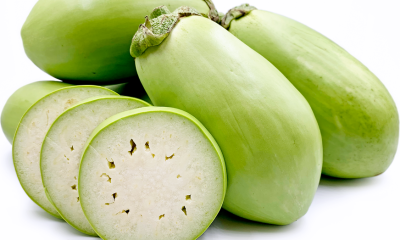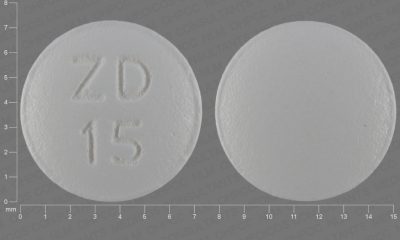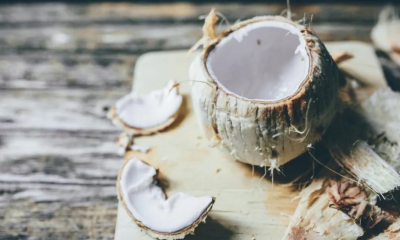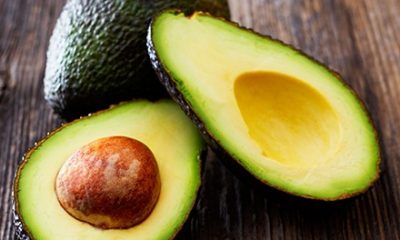Health
8 benefits of dandelion tea and side effects

Discover the 8 shocking benefits of dandelion tea and side effects.
What most people find to be an annoying weed, can be a healthy drink and a tasty tea.
Dandelions grow in gardens around the world every spring and last all summer.
Their bright yellow leaves are easy to spot and their seed pods are often used to make wishes.
These herbs offer powerful health benefits when consumed as food or in drinks such as tea.
We’ve put together a list of the health benefits of dandelion tea that will inspire you to brew a cup of this vibrant tea.
Whether you love the light floral flavor or prefer strong tastes like coffee, dandelion tea has something for everyone.
First, learn the health benefits of each type of tea here.
What is dandelion tea?
Dandelion tea is an herbal tea made from various parts of the dandelion plant. It is known as Taraxacum officinale.
There are several different types of dandelion tea depending on whether the tea is made from:
leaves,
flowers
or the roots of the plant.
One of the most common is known as roasted dandelion root tea or “ dandelion coffee ”.
The tea gets its name from the dark color of the roasted root, which resembles coffee beans.
This type of dandelion tea is often used as a coffee substitute.
Flavor profile
Dandelion tea made from flower petals offers a delicate and sweet taste.
Roasted dandelion teas offer a bolder flavor with smoky and toasted notes that are paired with a robust flavor.
Dandelion leaf teas offer an earthy, herbaceous flavor that may have astringent notes.
Health Benefits of Dandelion Tea
1. Contains large amounts of fiber
Dandelion leaves contain high concentrations of fiber, which helps to streamline digestion and improve overall health.
Eating a diet high in fiber can help improve digestive health and relieve intestinal tension.
The dietary fiber in dandelion leaves can also help prevent digestive system problems such as:
irritable bowel syndrome
kidney stones.
2. Rich in vitamin A
Dandelion leaves are full of vitamin A, which can help improve the appearance of your skin. They also reduce inflammation.
Vitamin A is also essential for healthy vision and can prevent serious problems like macular degeneration.
Dandelion tea is known for its cleansing properties
Vitamin A may also ease symptoms of measles, a disease rare in the United States, but which has recently increased in frequency due to anti-vaccination movements.
Taking vitamin A can shorten the duration of symptoms, including:
upset stomach
diarrhea
and fever.
3. Good for bone health
Dandelion root tea contains high amounts of vitamin K, which is known to help strengthen bones.
Studies show that vitamin K, especially K2, may be a better choice than calcium for bone health.
Calcium can cause stiffness in the arteries, which can increase the risk of blood clots.
Vitamin K2 offers the same mineral properties for bone health, with no side effects on heart health.
Drinking dandelion tea helps prevent fractures and breaks in bones that do not have high bone mineral density.
4. Helps target free radicals
Dandelion tea contains antioxidants that fight free radicals – compounds that can cause oxidative stress and damage to healthy cells.
Antioxidants work to remove free radicals from the body, thus protecting against long-term damage.
Free radicals have been linked to a host of health problems, including cancer and premature aging.
5. Benefits of dandelion tea for liver
Dandelion leaf tea can help protect liver function and aid digestion in general.
A study published in the Journal of Medicinal Food found that the antioxidant and anti-inflammatory properties of dandelion leaves help prevent liver damage in mice caused by unhealthy eating.
Dandelion tea contains vitamin C, which improves the absorption of minerals.
It also strengthens the immune system and prevents illnesses, including colds and flu.
The antioxidants in this tea also help stimulate bile production, which helps the body to break down and process food.
6. May help fight cancer
Dandelion root tea can cause certain types of cancer cells to die.
A study published in Evidence-Based Complementary Alternative Medicine looked at these cancer-fighting properties.
Researchers found that dandelion root extract – when combined with the diabetes drug metformin – could treat human melanoma G361.
7. Benefits of dandelion tea for urinary tract infections
Dandelion tea has natural diuretic properties.
These diuretic properties can also help regulate blood sugar levels. They improve the general state of health.
Consuming dandelion tea can help the body flush out toxins and wastes. This prevents bacterial infections in the urinary tract.
This happens because the healthy compounds in dandelion tea decrease inflammation and the diuretic effect increases urine output.
One study showed that these effects were most pronounced when dandelion was combined with uva ursi, known as bearberry.
8. Dandelion tea for weight loss
Dandelion teas can help speed up weight loss when used in conjunction with a healthy diet and exercise program.
Since tea has natural diuretic properties, it helps reduce water weight.
Dandelion tea is a natural diuretic
The antioxidants in dandelion leaves, dandelion flowers, and dandelion root extract also help speed up metabolism and improve fat burning.
Replacing sugary drinks with dandelion tea can also help reduce calories.
You still get a sweet and delicious flavor without the extra calories that can add up to the pounds.
The flavor of dandelion tea is also more exciting than that of plain water, so it’s easier to stay hydrated and stick to your diet.
Side effects of dandelion tea
If you are allergic to ragweed, you may also have an allergic reaction to dandelion tea.
Avoid drinking this herbal tea if you are allergic to dandelion or related plants including daisies and chrysanthemums.
Stop use immediately and contact a healthcare practitioner if you experience symptoms, including:
a rash
breathing difficulties
and an itchy throat.
Drugs interactions
Dandelions can inhibit the absorption of certain antibiotics, effectively decreasing the effectiveness of drugs.
If you are taking antibiotics, including Cipro and norfloxacin, talk to your health care provider before taking dandelion.
Dandelion can also interfere with certain diuretics and cause other side effects.
Dandelion tea is naturally caffeine-free
The main thing to watch out for is the potassium content.
Some diuretics contain potassium which when taken with dandelion herbal tea can reach unhealthy levels in the human body.
If you are taking any medication, always talk to your doctor before using any herbal or herbal teas.
Significantly increasing the consumption of dandelion tea in conjunction with medications for the liver may also decrease the effectiveness of these medications.
Consume this tea in moderation and check that the tea does not interact with your medications.
How to make dandelion tea
The process of brewing dandelion tea differs depending on the type of dandelion tea you are brewing.
In general, dandelion tea should be brewed using hot water or boiling water.
It is also better to use:
loose leaves,
fresh flowers
or dried roots rather than tea bags.
Leaves and flowers should steep for about 5-10 minutes, while roots are best 6-8 minutes.
Sunny and bright dandelion tea
Dandelion herbal tea is a delicious herbal tea that can bring sunshine to your world.
Vibrant flowers look gorgeous when infused in hot water and provide endless health benefits.
You can also opt for dandelion leaf or root teas if you prefer stronger flavors.
Pour yourself a delicious cup of dandelion tea and soak up the health benefits.
Health
13 Benefits of sorrel and side effects

Table of Contents
Health
Benefits of hyaluronic acid for acne

- Methods of treatment
- FREQUENT QUESTIONS
- What is the main indication of hyaluronic acid in acne scars?
- When is the effect of hyaluronic acid noticeable?
- How is hyaluronic acid applied?
- How many hyaluronic acid sessions are needed to treat facial acne scars?
- How is the face after doing the filling session?
- Is it a painful procedure?
- Can fillers be combined with other acne scar treatments?
- Is the effect of hyaluronic acid definitive?
Discover the benefits of hyaluronic acid for acne.
In most acne scars there is a loss of skin volume ( atrophy ), which gives the area where they form a depressed or “engraved” appearance.
This atrophy is the product of a lack of hyaluronic acid and collagen in the dermis, the intermediate part of the skin, responsible for giving the turgidity, volume, and elasticity of healthy skin.
Methods of treatment
There are different methods to treat atrophic scars, which we could classify into two different groups according to their speed of action:
· Immediate effect. They are called fillers, biocompatible substances that can be injected into the skin to give volume to areas that have lost it.
Among them, those of hyaluronic acid, polylactic acid, or calcium hydroxyapatite stand out among others. Its turgid effect is immediate, filling cavities, furrows, and atrophic areas of the skin with very natural results. The duration of these materials is limited, so periodically (every 6 – 18 months ) it is common to practice a new session.
· Delayed effect. It implies that they promote the synthesis of collagen and ground substance of the dermis. It is worth mentioning the fractional lasers (ablative or non-ablative) and the intermediate and deep peels.
The main advantage of these methods is that their effect is permanent once the optimal point of improvement has been reached, which is not immediate but after practicing several sessions of the procedure.
Hyaluronic acid is indicated in the treatment of atrophic, depressed, and ice-pick acne scars. There are different densities of hyaluronic acid, designed to treat different forms of atrophy or loss of volume.
For the treatment of moderate or ice pick acne scars, it is useful to use low and intermediate densities; and to recover a large volume in especially atrophic areas, it is possible to use higher densities to cover the maximum repertoire of defects.
The main advantages of using hyaluronic acid lie in its immediate action, its durability, its biocompatibility, and its minimal allergenic potential. This molecule can fill in atrophic scars, providing optimal volume immediately and in the short term, promoting collagen synthesis in the long run.
In this way, the irregularity on the surface of the skin is substantially reduced after the application of hyaluronic acid, improving the overall appearance of the skin in the treated area.
Another positive aspect of using hyaluronic acid is that it usually only requires a single application session. Likewise, fillers are one of the best tolerated aesthetic procedures since they have a minimal rate of adverse effects and the pain caused is minimal if a precise technique is followed. Slight erythema (redness) that lasts 2-4 hours after the procedure is common and can be reduced with the application of cold compresses.
According to studies published by Halachmi et al, the satisfaction rate and results in patients with atrophic acne scars and ice pick treated with hyaluronic acid are excellent.
The only limiting aspect of hyaluronic acid fillers is their duration. This molecule is naturally degraded in the skin, its effect persisting for 6-18 months depending on the density of hyaluronic acid used and the indication for which it has been applied.
Specifically, for acne scars, the duration of hyaluronic acid is the maximum possible, since it is retained within the fibrosis that partitions the scars. It should be remembered that, in the long term, this molecule favors the synthesis of collagen, so that the perceptible effect is progressively more durable as different sessions are carried out.
FREQUENT QUESTIONS
What is the main indication of hyaluronic acid in acne scars?
Its main effect is to fill in depressed scars and regularize the appearance of the skin surface.
When is the effect of hyaluronic acid noticeable?
The effect of hyaluronic acid is immediate and noticeable at the end of its application. Over a week or so, the hyaluronic acid settles in the applied area and the surface where it has been applied progressively becomes even more regular.
How is hyaluronic acid applied?
The procedure is performed in the Dermatology consultation through microinjections applied under the scars to be treated. An anesthetic cream is usually used before the session and it is very tolerable, with minimal discomfort.
How many hyaluronic acid sessions are needed to treat facial acne scars?
In general, if they are not very deep or extensive, one is enough.
How is the face after doing the filling session?
The corrective effect of hyaluronic acid is immediate. At the end of the session, most atrophic and depressed scars have recovered all or part of their lost volume. Immediately after the session, it is usual to see some redness in the treated areas and slight swelling, which usually lasts between 2-4 hours.
It is possible, although infrequent, that during the procedure a minimal punctual hematoma may appear in an injection area, which will disappear spontaneously over a week or so.
Is it a painful procedure?
Filling with hyaluronic acid after application of anesthetic cream is one of the most well-tolerated and appreciated aesthetic procedures, with an excellent satisfaction rate for the patient.
Can fillers be combined with other acne scar treatments?
Yes. They can be used concomitantly with ablative/non-ablative peels or lasers, or even botulinum toxin if desired. It is recommended, yes, to carry them out in different sessions.
Is the effect of hyaluronic acid definitive?
No. Although with each session there is a certain accumulation of the effect due to the collagen synthesis promoted by hyaluronic acid, it is advisable to perform a filler every 6-18 months depending on the indication and the area to be treated.
Health
10 Benefits Of Feijoa Or Pineapple Guava

Table of Contents
- What is feijoa or pineapple guava?
- Knowing the flavor of feijoa
- Nutritional contributions of feijoa.
- 10 health benefits of feijoa.
- How to eat feijoa?
- Discover the 10 Benefits Of Feijoa Or Pineapple Guava.
Feijoa can have a wide range of health effects, including aiding weight loss, improving digestion, lowering cholesterol levels, boosting the immune system, increasing bone strength, lowering blood pressure, optimizing nutrient absorption, balance metabolism, increase circulation, stimulate cognitive function and regulation of blood sugar levels, among other benefits of feijoa.
There are very few reported side effects, although allergies to this fruit do exist, and some reports of gastrointestinal problems and low blood sugar levels have been documented.
That said, for most people who consume this fruit in moderation, it offers far more health benefits than side effects, so there’s no running away from the benefits of feijoa.
What is feijoa or pineapple guava?
Feijoa has another name in many parts of the world: pineapple guava. Scientifically known as Acca sellowiana, the plant that produces this fruit is a shrub or small tree native to regions of South America, such as Argentina, Brazil, and Colombia. It is now widely cultivated for its sweet fruit, as well as for ornamental purposes.
The fruit is green and ellipsoid-shaped and is about the size of a plum or a small avocado.
The unique flavor and impressive supply of nutrients make feijoa highly sought after as it can have many different culinary applications, from an ingredient in smoothies to cocktails, desserts, chutneys, and cooked fruit dishes.
Knowing the flavor of feijoa
Feijoa has a very unique flavor, with sweet, sour, and bitter elements, which many people compare to guavas and pineapples, as its common name implies, but it also has a slight strawberry flavor. In some cultivars, there are very subtle notes of mint, which can increase as the fruit ripens.
To ensure the best flavor and flavor of the feijoa, the fruits should be collected the day they fall from the tree, as this indicates the ideal ripeness.
Before that, the taste is more bitter, while after the fruit falls, it can become too ripe and unpleasant to eat.
Nutritional contributions of feijoa.
Whether you are eating the fruit for its benefits or its exotic flavor, you will benefit from its impressive nutrient content.
The calorie content per serving (100 grams) is just 55, which is unusually low, this tropical fruit also contains significant levels of vitamin C (over 50% of your daily recommendation per serving), as well as a diverse selection of B vitamins. and traces of vitamin E, K, and A.
In terms of mineral content, feijoa contains moderate levels of copper, manganese, magnesium, potassium, iron, and calcium.
A single serving of this fruit also delivers more than 15% of your recommended daily dietary fiber, in addition to various phytochemicals, phenols, and antioxidants.
10 health benefits of feijoa.
People who regularly consume this fruit to make themselves available to the benefits of feijoa will receive health favors related to blood pressure, cholesterol, obesity, immune health, oxidative stress, metabolism, osteoporosis, indigestion, diabetes, circulation, cognitive function, and nutritional deficiencies.
1.- Increase immunity
With a strong supply of vitamins and minerals in the fruit, the benefits of feijoa allow regular consumption to give your immune system a much-needed boost.
Vitamin C can stimulate the production of white blood cells, the body’s first line of defense, while also acting as an antioxidant to search for free radicals; a single serving of pineapple guava has more than 50% of your recommended daily vitamin C.
2.- Regulates blood pressure
Potassium-rich foods are important for people who suffer from high blood pressure and therefore are at high risk for cardiovascular disease, atherosclerosis, and stroke.
Potassium is a vasodilator, which means that it can reduce stress on blood vessels and arteries, and generally relieve stress on the cardiovascular system.
3.- Digestion AIDS
High levels of dietary fiber (about 17% of your recommended daily fiber per serving) mean that this fruit is capable of optimizing digestion by stimulating peristaltic movement and enhancing nutrient absorption.
This can help ease symptoms of indigestion, constipation, bloating, cramps, and a general upset stomach.
4.- Reduces cholesterol
In addition to improving digestion, dietary fiber is also directly linked to lower cholesterol levels, particularly “bad” cholesterol, which can increase your risk of heart disease.
By removing this cholesterol from the arteries and blood vessels, it lowers the risk of blood clots, heart attacks, and strokes.
5.- Improve Cognition
The antioxidants present in feijoa have been associated with increased memory and retention, better focus, and a lower risk of neurodegenerative diseases, such as mental illnesses such as Alzheimer’s and dementia; antioxidants can seek out and neutralize free radicals in neural pathways before they can cause plaque buildup.
6.- Increases metabolism
The B vitamins are incredibly important for the overall functioning of the body, especially when it comes to metabolic activities such as the synthesis of proteins and red blood cells, the production of hormones, the stimulation of the functioning of the nervous system, and the generation of energy within cells. . Fortunately, feijoa benefits from moderate levels of numerous B vitamins.
7.- Improves bone strength
With significant levels of manganese, copper, iron, calcium, and potassium, this tropical fruit is very effective in increasing bone mineral density and helping prevent the onset of osteoporosis as you age. This can increase your energy levels and keep you more active and capable in your later years.
8.- Control diabetes
Research has shown that eating feijoa can help regulate blood sugar levels, due to its low level of calories and carbohydrates, which can help regulate the body’s production and release of insulin.
9.- Increase circulation
Although there is a relatively small amount of iron present in feijoa, it can still aid red blood cell production and circulation, while the metabolic boost from vitamin B can also stimulate blood flow. This means greater oxygenation in critical areas of the body and higher energy levels.
10.- Promotes weight loss
There are only 55 calories in a 100 gram serving of the feijoa, but plenty of dietary fiber and nutrients. Combined with the low level of carbohydrates, this means that the body will feel full and access a significant supply of nutrients without adding too many calories or sugar to your daily intake. This can have a positive impact on weight loss goals and avoid overeating or snacking between meals.
How to eat feijoa?
The skin of the pineapple feijoa or guava fruit is edible, but many people prefer to cut the fruit in half, such as avocado, remove the seeds, and then scoop out the soft, sweet pulp with a spoon. However, simply slicing the fruit, without removing the skin, can deliver even more dietary fiber.
The bitter taste mainly occurs near the skin of the fruit, so if you want a sweeter snack, remove the skin entirely. The fruit is at ideal maturity when the pulp of the seed is completely clear.
As this fruit tends to ripen very quickly, there may be some brown or discoloration near the center, but this does not mean that the fruit is rotten and that the creamy flesh is perfectly safe to eat.
Avoid eating pineapple guavas that are more than half golden on the inside, as they may have started to go bad.
-

 Food1 year ago
Food1 year ago10 + Benefits of carrot juice and side effects
-

 Benefits4 months ago
Benefits4 months agoThe Benefits of Joining Gym Lumolog – Improve Your Fitness & Health
-

 Health1 year ago
Health1 year ago50 Super Healthy (And Very Often Cheap) Foods
-

 Health1 year ago
Health1 year ago5 Shocking health benefits of kinkeliba and side effects
-

 Food1 year ago
Food1 year ago8 shocking benefits of leek juice and side effects
-

 Health1 year ago
Health1 year agoBenefits of guava leaves Sensually
-

 Weight Loss1 year ago
Weight Loss1 year agoChaz Bono weight loss secret
-

 Health1 year ago
Health1 year ago13 shocking health benefits of Thai eggplant












